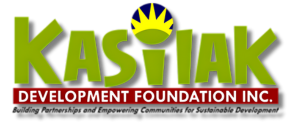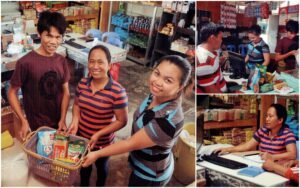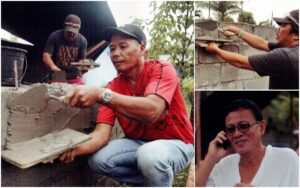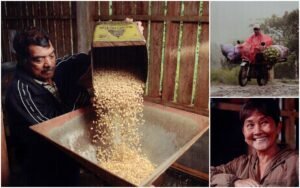
Culturing worms gives ‘Caloy Wati’ an edge over other farmers.
They say the early bird catches the worm, but for Prudencio “Caloy” Balneg of Barangay San Vicente in Makilala, North Cotabato, it was the latecomer who bagged it.
“l was the last to join the vermiculture production project of the Municipal Agricultural and Fisheries Council (MAFC),” he says. “My fellow farmers had been given starter worms in 2010 but I didn’t avail myself of it. When the budget from the Bureau of Soil and Water Management was released again in 2011, I was given my six kilo starter set.”
Vermiculture uses earthworms to decompose organic food waste, turning it into a nutrient-rich material called vermicast which is ideal for use as an organic fertilizer. “To be honest I really had no interest in vermiculture,” Caloy confesses. “But I told myself that since I already had the starter, I might as well use it.”
At the beginning he grew the worms for his own rice farm. He knew how destructive synthetic fertilizer could be, having seen that each cropping cycle required more and more chemicals. “The soil slowly dies with artificial fertilizer. Back in the 1960s you needed only one sack of chemicals for 1.5 hectares of farmland. Now you need up to 36 sacks. If you don’t keep adding after every copping, your harvest will go down,” he says.
“l told myself that this was unsustainable, so I cultured the worms. They needed very little attention, and soon I found that I had a large volume both of worms and vermicast. I used the vermicast in my farm and the result was so good that I had a bumper crop,” he adds.
Caloy says his neighbors initially laughed at his efforts. “But one of them bought some vermicast from me and used it in his farm. He also had excellent results, and soon other farmers came to buy my organic fertilizer. It was only then that I realized I could make money from worms.”
Kasilak soon invited Caloy — who by then had earned the moniker “Caloy Wati” (wati being the Visayan word for worm) — to attend a meeting of the Farmer Alliance for Resource Management (FARM) — the same Project funded by USDA through CRS Philippines and implemented by Kasilak as one of the local implementing partner-NGOs in the Philippines — which at the time was promoting the use of organic fertilizer. “l was identified as one of the suppliers of vermicast. A month later I won the bidding to supply vermicast worth P101 ,000.00”
Caloy can no longer calculate how many worms he has raised and how much vermicast he has sold. He estimates that he produced more than 700 kilos in 2015, but the following year was a bad one because of the drought brought on by El Nino. He is now slowly recovering, encouraged by the increasing demand for organic fertilizer.
Meanwhile, Caloy has also begun teaching college students who go to his farm to study his methods. He credits Kasilak for connecting him not just to the market but also to those who have a heart for organic farming.
“If it hadn’t been for Kasilak I wouldn’t have any of these. They promoted me not just to the buyers but also to those who want to learn how to grow their crops without having to resort to destructive methods.”



